 |
|
NIPPONIA No.21 June 15, 2002
|
|
Special Feature*
After 30 years of research, the artificial breeding and raising of tuna is just around the corner
Catches in coastal waters have declined over the last few years, so the market is turning more to products from fish farms. The goal is to protect marine resources and ensure regular supplies from fish farms, and this can hopefully be done through full-cycle fish culture, which starts with the artificial breeding of fish from eggs laid in captivity. The technology for this was perfected about 20 years ago for species such as sea bream, blowfish and flatfish, and these fish are now being hatched and grown in fish farms. But because yellowtail is a migratory fish, it is extremely difficult to breed it artificially, and fish farmers have been forced to depend on yellowtail fry caught in the open sea.
Research into the artificial breeding of yellowtail is seeing positive results. Meanwhile, Kinki University's Fisheries Research Institute is close to achieving a full-cycle culture for the migratory tuna.
Adult tuna about 1 meter in length now swim in the large tank at the Institute. Kumai Hidemi, the head of the Institute, says, "We took eggs from female black tuna caught in the wild, then artificially bred them."
The Institute has reached this stage after 30 years of trial and error. But to achieve a full-cycle culture, Kumai says it will have to artificially breed eggs laid by tuna in captivity. Japanese consumers like tuna even more than yellowtail and sea bream, and the day when fish farms provide them with a regular supply of tuna is fast approaching.
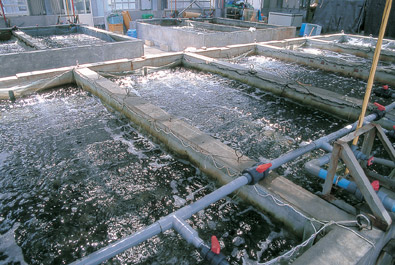
An abalone farm at the Nagasaki Municipal Fisheries Center.
|
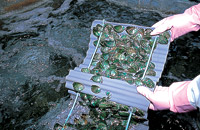
The Center produces about 200,000 abalone a year. They grow to a diameter of about 2.cm in one year, and are then released into the sea. The abalone eat seaweed, especially wakame and konbu.
|
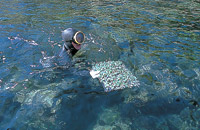
Divers place them between rocks in the sea, to protect them from enemies.
|
Forests—an important source of nutrients for the sea
While some efforts aim at full-cycle culture in fish farms, others are being directed at stimulating coastal fishing by increasing marine resources.
One way to achieve this is by artificially breeding fish and shellfish, then releasing them into the sea when they are a certain size. This is done for species such as sea bream, flatfish and salmon, but especially for abalone and sea urchin which will most likely remain in the bay, unlike many other species.
Two other approaches involve sinking concrete blocks into the water to make artificial fish habitats, and floating buoys in the open water to release fish feed.
Overfishing is being tackled by a growing number of fishing cooperatives. They ask their members to release fish that are under a certain length (norms depend on the species), and designate fishing "holidays" when no fish are to be caught.
Another trend seen in Japan is to plant trees on mountains, even on slopes quite far from the ocean. The leaves become humus, which helps purify the water as it filters through the soil. The water is then suitable for drinking and agriculture, and the rich humus releases nutrients into rivers that flow to the sea and provide nourishment for plankton and seaweed, which are in turn eaten by fish. In this way, the forests end up feeding the fish.
When forests suffer, fishing grounds do, too. Any focus on improving the ocean will end up expanding to include the ecosystems of the entire planet. 
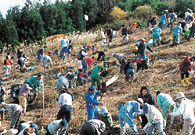
Local residents and fishermen worked with the Association for the Planting of Beech Trees on Mount Chokai, planting about 13,000 broad-leaved trees on Mount Chokai on the border between Akita and Yamagata prefectures in northern Japan. They plant saplings every year, with excellent results—sandfish in nearby waters were in steep decline, but are now making a comeback.
|
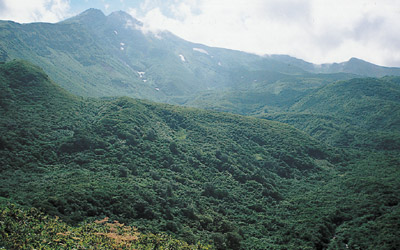 |
|
 |